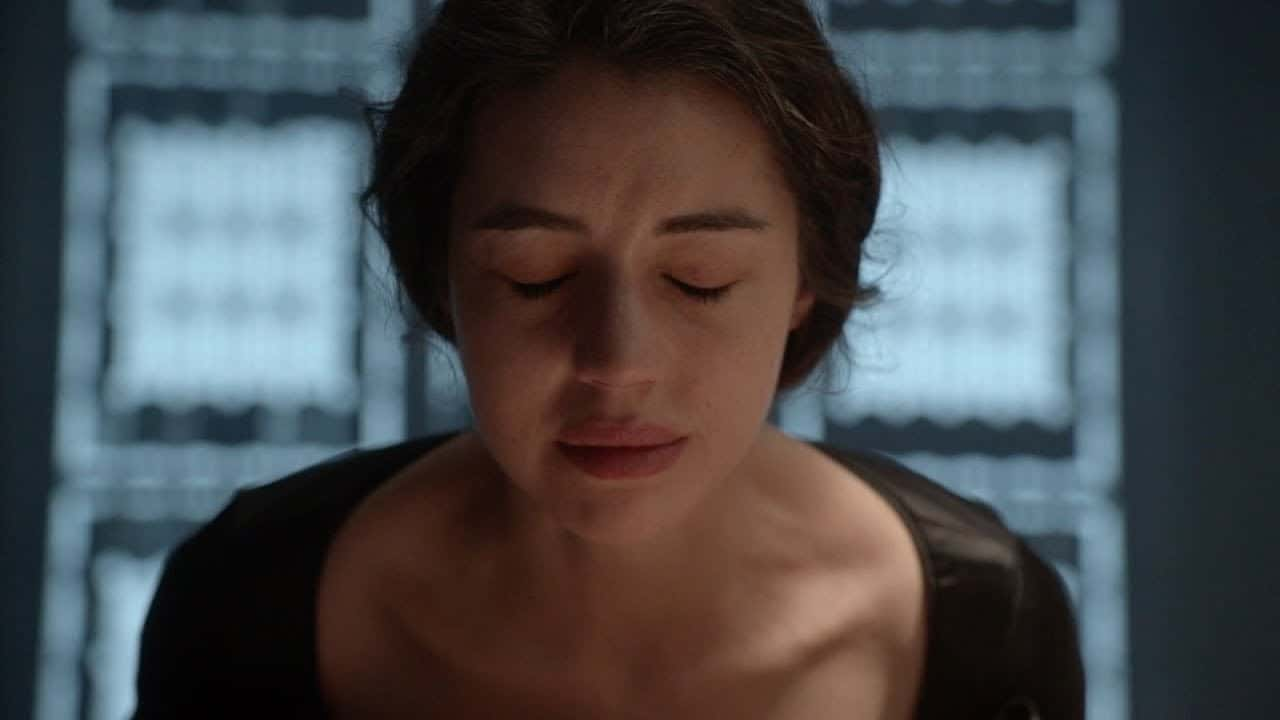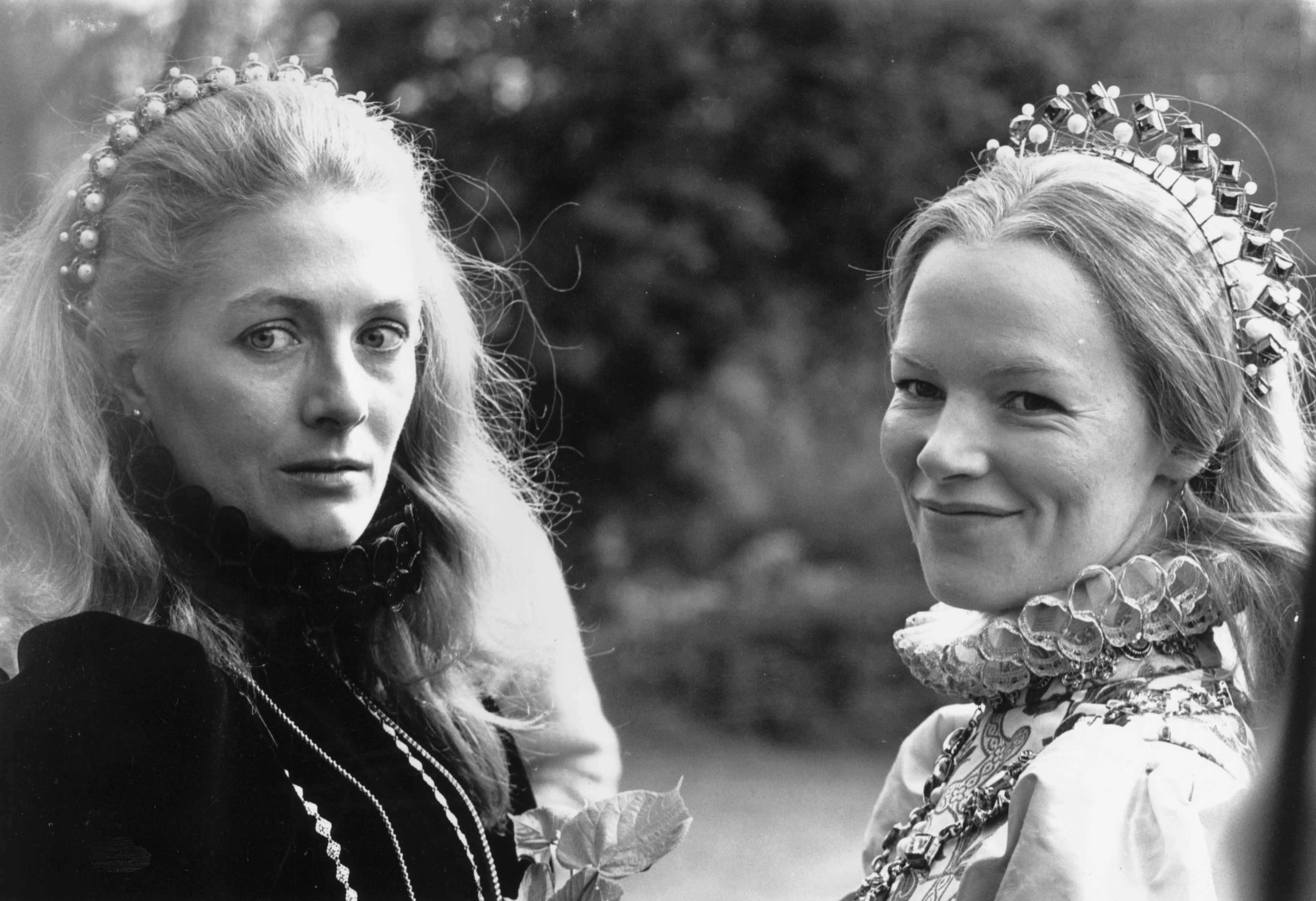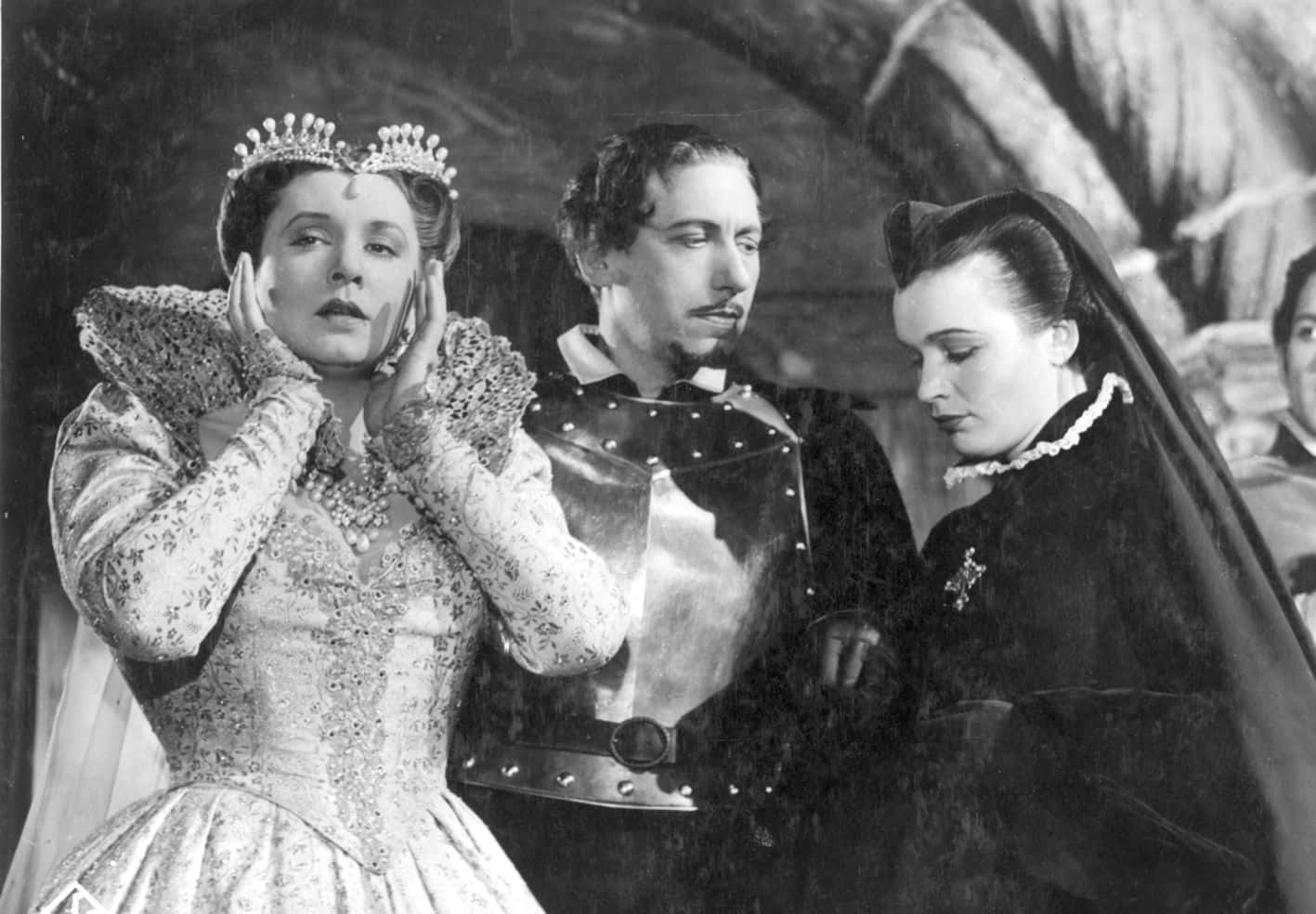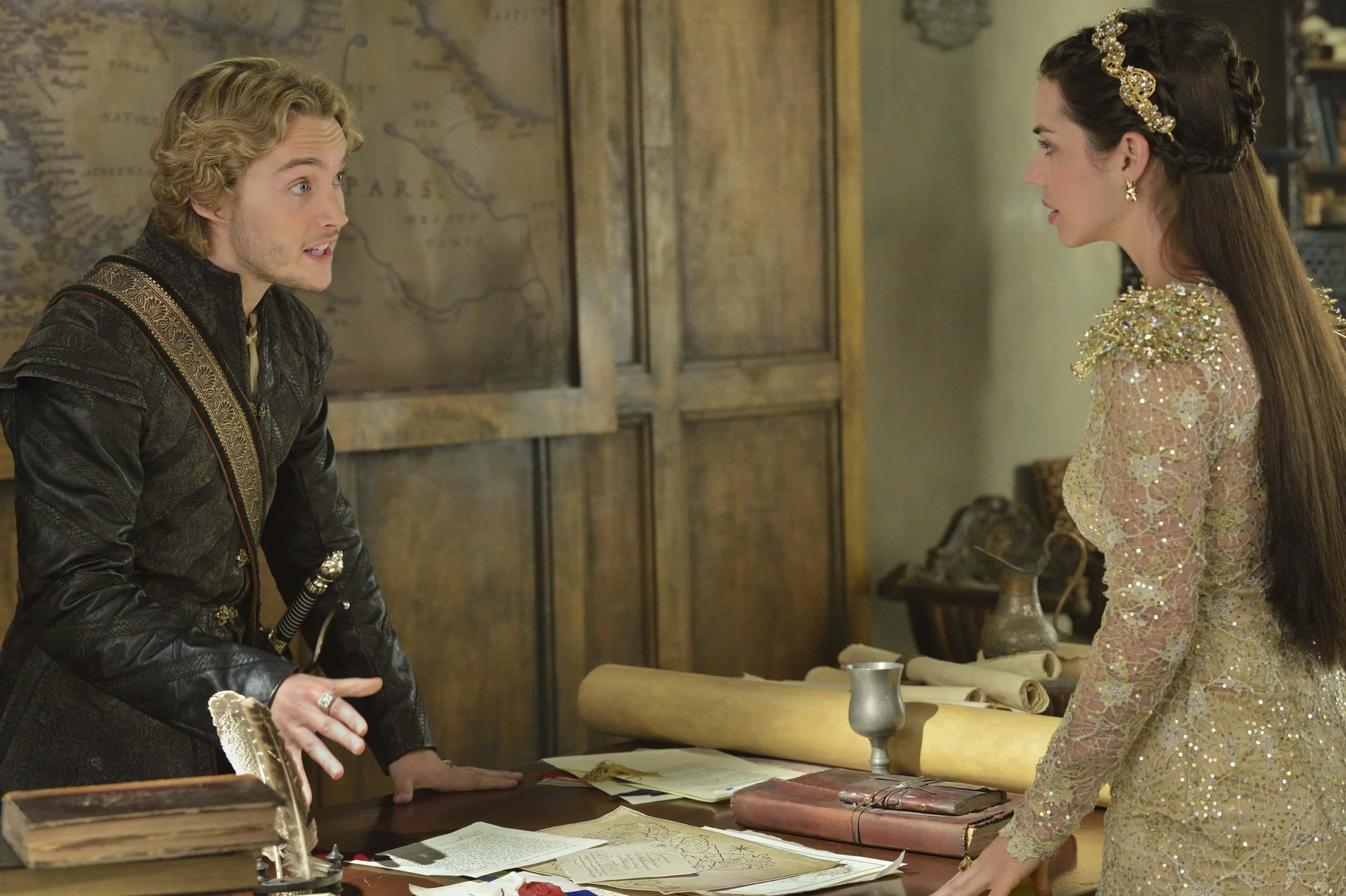"In my end is my beginning" —Mary Queen of Scots
Mary Stuart, also known as Mary, Queen of Scots, was born December 8, 1542 to King James V of Scotland and Mary of Guise from France. She was just six days old when her father died and she became the Queen of Scotland. Mary is most notorious for allegedly plotting against Queen Elizabeth I to steal the throne, which ended up resulting in her execution in 1587 at age 44. But, absurdly, this was only one of the many great tragedies that happened in Mary's life. Below are 45 ill-fated facts about the tragic Scottish Queen.
45. Mary’s Marys
Mary had four ladies-in-waiting all with the name Mary. Mary Fleming’s mother had royal blood, and therefore she had the most seniority. Then came Mary Seton, whose mother Marie Pieris had been Mary of Guise’s maid of honor. Then came Mary Beaton and Mary Livingston, who were the daughters of nobles. Of the four, Mary Seton never married, and she stayed loyal to her mistress until her retirement.
44. Where the Thistles Grow
It’s said that on the site of Mary’s execution, a small clump of purple thistles grow. The thistles are nicknamed Queen Mary’s tears in honor of the queen.
43. Bad Timing
Mary was an avid golfer and the first female to play the sport in Scotland. In fact, she was spotted playing golf at St. Andrews just days after her husband Lord Darnley’s murder (more on that to come), which was really bad optics and not the best decision she could have made.
 Pinterest
Pinterest
42. Friend or Enemy?
Mary Stuart was great niece of King Henry VIII of England and a granddaughter of Margaret Tudor, which made her and Elizabeth I first cousins, once removed. Unfortunately for Mary, her Catholic faith and the fact that the English Catholics considered Elizabeth illegitimate made her a serious threat. Cousin or not, it’s hard to be too friendly with someone who might knock you off your throne.
41. Don’t Drink the Water!
The exact cause of James V’s death is unknown, but it’s believed that he either collapsed from the trauma of being defeated at the Battle of Solway Moss, or he drank some tainted water during the war. If only they’d had Evian!
40. Anti-British Propaganda
During WWII, the Nazis made a propaganda movie about Mary’s life called Das Herz der Konigin (The Heart of the Queen). Not that they had to reach too hard to find something negative to say about Queen Elizabeth, but the movie built up her calculatedness, and placed special emphasis on her desire to expand the British Empire.
39. Woman in White
In 16th century France, white was worn for mourning, but Mary liked the color white and disregarded tradition to wear it for her wedding.
38. Mutual Hate
In 1295, Scotland and France formed the Auld Alliance in order to prevent England from taking over Europe. The alliance’s primary purposes were military and diplomatic, but it also allowed some Scottish folk to sample exported French delicacies—and it would come back in a big way during Mary's reign.
37. Protecting Their Asset
In 1543, the English King Henry VIII started plotting to marry his heir Edward to Mary, but when Scotland—still pretty skeptical of England's power-hungry expansion plans—refused, he took other, darker measures. He began attacking Scotland in what became known as the "rough wooing" to get the Scottish crown to submit to the union. However, Mary’s mother was no fool, and she sent her daughter to be educated in France and primed for marriage to the French Dauphin instead. This move reinforced the French relationship with Scotland and gave the Scots some further military support against the English.
36. United as One
The marriage of Francis and Mary was a strategic one. The idea was that France and Scotland would be united under the pair. They married when she was 15 and he 14 with much pomp and circumstance. Little known to Mary's people, the French King Henry II took advantage of Mary by convincing her to sign disadvantageous treaties that sought to make Scotland subordinate to France.
35. Premature Death
When King Henry II died in an unfortunate jousting accident in 1559, Francis and Mary became the King and Queen of France. That reign didn’t last long, however. Francis was always sickly, and less than two years after he took the throne, he collapsed from a temporary stoppage of oxygen to the brain and died a few weeks later, apparently from an ear condition.
 Pinterest
Pinterest
34. A New Opportunity
1560 was a pretty lousy year for Mary. First her husband died, and then her mother. On the other hand, this all worked out well for the French, who took the opportunity to send Mary back to Scotland and use her to make a play for the English throne. It might not have been a bad idea in theory, but in reality nothing good came of the move for Scotland or for Mary.
33. Looked Good on Paper
Mary’s second marriage was one of her choosing, but that still didn’t leave her free to pick just anyone. She strategically chose her handsome cousin Henry Stuart, Lord Darnley, who had the right background and a genuine claim to both the English and Scottish thrones. These were about his only plusses, and he turned out to be an arrogant scoundrel and a drunk who had also likely contracted syphilis. Charming fellow! Still, Mary had the hots for him: she once called him the "lustiest and best proportioned man" she knew.
32. An Opulent Ritual
How did Mary keep that fashionable porcelain complexion? She washed her face in white wine to keep her skin smooth, soft, and wrinkle-free. This routine was extremely vexing to her English keepers, who had to pay for her upkeep out of pocket while she was Elizabeth’s prisoner.
 YouTube
YouTube
31. Rejected Treaty
Before sending Mary to France, a treaty was signed between King Henry VIII and Mary's regent which would have put an end to the fighting between England and Scotland. Had it been accepted by the Scottish Parliament, the Treaty of Greenwich would have created peace between the two countries and would have married Mary to Henry’s son, the future king Edward VI, but it didn't hold.
30. A Girl of Many Talents
Mary was quite an accomplished child and managed to learn a number of skills. She excelled in poetry, prose, falconry, languages, and horsemanship. Not exactly the most practical skills for non-royals, but useful skills for a Queen to have.
29. No Path to Sainthood
Since her death, there have been multiple efforts to make Mary a Catholic saint, but over four centuries later, there’s still one little detail that’s preventing that from happening. Nobody can prove for certain whether or not Mary killed her second husband Lord Darnley, and a possible murderess can’t be a saint.
28. Which One Is She Mourning?
When Mary’s husband Francis died, she went into official mourning. Although they were reported to get along, it’s hard to say whether she was more upset over losing him, or her French crown.
27. Assassination Plot
In 1586, a plot was hatched to assassinate Queen Elizabeth and to place Mary Stuart on the throne. The plot was called the Babington plot, named after one of the co-conspirators, Anthony Babington. Mary might have been able to feign innocence, but a letter sent by Mary while she was imprisoned revealed that she authorized the assassination; it sealed her fate.
26. A Horrible Death
Although Mary was eventually beheaded, beheading was a walk in the park compared to the fate of Mary’s third husband James Hepburn, the Earl of Bothwell—but he may have thoroughly deserved it. After the suspicious death of Mary's second husband Darnley (in which the Earl was a murder suspect), Bothwell, according to some sources, took Queen Mary by force, imprisoned her, and then married her.
Though some sources at the time argued that the marriage was consensual and not what it looked like, it certainly looked pretty disturbing—and it had the nobles, who didn't approve of the union, literally up in arms. The obviously super upstanding Bothwell ended up fleeing the country, and wound up infamously imprisoned in the Danish fortress of Dragsholm. During his ten long years in prison, he was chained to a pillar short enough to prevent him from fully standing up, and was kept in the dark in his own dirt and grime. He apparently died insane and covered in hair, and up until recently his alleged mummified remains were on display in a nearby museum.
 Google News
Google News
25. Mismatched Pair
When it came to their looks, Mary and her first husband Francis couldn’t have been more different. Mary was considered to be an attractive woman and, at 5’11, she was unusually tall for a girl. Francis, on the other hand, was short, fragile, and had a stutter, so all in all, he didn’t have a lot going for him—except that crown.
24. Infant Monarchs
Being named an infant King or Queen was a bit of a trend in Mary’s family. Her father James V was crowned King of Scotland at just 17 months when his father was killed in battle. Mary was crowned at six days old, and her son by Lord Darnley, James, was only one when Mary was forced to abdicate her throne.
23. Public and Private
Mary’s public attitude toward the Catholic religion was much different than her private one. In private, she continued to practice the Catholic faith, but in public, it was a much more complicated issue. Mary understood that the only way to avoid a rebellion would be to appease both the Catholic and Protestant nobles. In order to do so, she couldn’t be seen to be favoring the Catholics, and when it came to the Reformation Act of 1560 that declared Scotland Protestant, she did nothing. She neither ratified nor revoked the act, which was good enough to keep the peace.
22. Boom!
In the early morning of February 10, 1567, two large and loud explosions almost reduced Kirk o’ Field, near the Scottish Royal estates, to dust. People from throughout the area gathered to see the disaster, which would have been quite the sight.
21. Whodunit?
A later investigation of the explosion revealed that two barrels of gunpowder had been hidden under none other than Lord Darnley’s bedroom. They definitely should have killed him, but his body wasn’t found in the rubble. Instead, a soldier found his body, along with the body of his valet, on the grounds, obviously strangled to death and very much not blown up. Oddly, they were surrounded by a cloak, a dagger, a chair, and a coat, and Darnley was only in his nightshirt, as if he had fled his rooms. A lot of people had cause to want Darnley dead, including Mary and her next husband the Earl of Bothwell, but the identity of the killer(s) officially remains a mystery.
20. Never Met
Believe it or not, Elizabeth and Mary never met face-to-face. Elizabeth sent a representative to Mary’s son’s christening, and despite promises to visit her in prison in England, she somehow always managed to not. She couldn’t even be bothered to attend Mary’s funeral in person, sending the Countess of Bedford in her stead.
19. False History
The upcoming Mary Queen of Scots film has come under fire from historians for a false and misleading depiction of the relationship between Mary and Elizabeth I. The film portrays the women as friends who turn into rivals, and portrays a meeting between them that never happened. Obviously they’ve never heard of dramatic license!
18. A Hostile Act
After the death of Francis, Mary started looking for a new husband, and was in negotiations with Phillip II of Spain for a Catholic marriage to his son Don Carlos. When Queen Elizabeth got wind of it, she made it pretty clear that she wouldn’t regard that move kindly to say the least, and nixed the union.
17. Marrying a Murderer
When Mary's unpopular, possibly forced marriage to Bothwell backfired and caused him to flee, it also backfired on the Queen herself. You see, forced or not, Scotland was none too happy that she had married a suspect in her late husband's murder, and they also suspected she had been having an affair with Bothwell. Within weeks, the lords turned against her and forced her to abdicate.
16. Loched up
As if abdicating her throne wasn’t enough punishment, she was also held at Lochleven Castle, which was on an island in the middle of, yes, a loch. But Mary wasn't about to waste away her life on a island, and 11 months later she got her guards drunk, disguised herself, and walked right out the front door during May Day celebrations.
15. No, You Marry Him!
Elizabeth’s choice of husband for Mary after Darnley’s death was Robert Dudley, a good (possibly more than) friend of the English queen. Elizabeth wanted a husband for Mary whom she could easily control, even though it was rumored Elizabeth had feelings for Dudley herself that she was suppressing for the good of her country. Mary agreed to the match, but it was Dudley who refused, as he was still hung up on Elizabeth and hoped she’d change her mind and marry him. He was also more than a little worried that Elizabeth would eventually see his marriage to the Scottish queen as a betrayal.
14. A Difference of Opinion
Mary’s half-brother James Stewart had a conflicted relationship with his sister. When she was a child, he roused the Protestant Lords against her due to her efforts to preserve Catholicism in Scotland. On the other hand, he supported Mary when she fully became queen, despite her Roman Catholic religion.
13. Questioning Authority
Stewart’s support of Mary ended, however, when she married her Catholic cousin Lord Darnley, and he led a group in rebellion against her. They acted in the name of the Scottish Reformation, and it became known as the Chaseabout Rebellion due to Mary’s forces "chasing" the rebels about Scotland.
12. Taking Control
Mary of Guise had always assumed that she’d be named her infant daughter’s regent when the girl was crowned Queen, but she was passed over for James Hamilton, Earl of Arran, who just so happened to be a supporter of Protestant England. In 1554, Mary of Guise finally got her wish and amassed enough power to take control of the regency. Her rule was neither easy nor peaceful, and she was constantly under threat from those who supported the English and the Protestant cause.
11. Not a Warm Welcome
After escaping from her island prison in Scotland, Mary fled to England, hoping that Elizabeth would throw her support behind her and help her take back her Scottish crown. Elizabeth had a different idea in mind, however, and instead of welcoming her, she decided to lock her up, keeping her imprisoned in multiple remote castles across England for 20 years.
10. Poor Execution
The execution of Mary wasn’t exactly a clean one. When the executioner took his first swing, he missed, and it hit her in the back of the head. He swung again, but the head hung on. Finally on the third swing, he managed to get the job done. But the humiliation wasn't over: he reportedly held the head up by its tresses and said, "God save the Queen," but it turned out that Mary had been wearing a wig. The head toppled to the ground, revealing short grey hair. One eyewitness account also added that Mary's lips kept moving in the minutes after her beheading.
9. Doing the Dirty Work
Elizabeth may have been fine with keeping Mary locked up and out of the way, but her spymaster Francis Walsingham knew that ordering Mary's death was another story entirely, and he’d have to come up with some pretty compelling evidence to make Elizabeth take that fatal step. When he heard about Babington’s plot to assassinate Elizabeth, he got a double agent to intercept Mary’s letters in hopes of catching her red-handed.
8. Forever Apart
Mary’s abdication marked the last time she would ever get to see her son. With Mary in prison, James grew up under the influence of Protestant regents who taught him that the Catholic religion and his mother were bad, and that’s why she needed to be locked up.
 Youtube
Youtube
7. Queen’s Best Friend
Mary’s dog, a Maltese terrier, remained loyal to her through the execution, and the executioner discovered him hiding under her dress. No matter how hard he tried to chase him off, the dog refused to leave his mistress and reportedly lay down in a puddle of her blood. The poor little thing pined for her after her death.
6. Premature Aging
Though Mary was revealed to have grey hair at her execution, it may not have been only from aging, but also from the trauma and suffering she endured while in prison.
5. Not Guilty
During her trial, Mary gave a pretty good argument in her defence. She argued that she had not been afforded legal counsel, and that since she wasn’t an English subject, she couldn’t possibly be guilty of treason. Neither argument worked, and she was found guilty anyway and sentenced to death.
4. Forgive Us!
According to eyewitness accounts of Mary’s execution, the two men charged with her execution followed the custom of asking their victim for her forgiveness, to which she responded, “I forgive you with all my heart, for now, I hope, you shall make an end of all my troubles.”
 Youtube
Youtube
3. Jealous Husband
In addition to being a drunk and a knave, Darnley was also a jealous idiot, and he really didn’t like how much influence Mary’s secretary David Rizzio seemed to have over her. Unable to stand it any longer, he arranged for men to rush into Mary’s private rooms, where they murdered Rizzio in front of a pregnant Mary and her ladies-in-waiting. Darnley claimed not to have had anything to do with it, but his accomplices gave him up.
2. Just Say You’re Sorry
In a last-ditch effort to avoid having to execute Mary, Elizabeth pleaded with her to just admit to her crimes and beg forgiveness so that she could pardon her, but Mary refused.
1. Those Weren’t My Orders!
After the trial, Elizabeth’s councillors decided to carry out Mary’s death warrant (which Elizabeth did knowingly sign) without telling the Queen. When she found out what had happened, she became irate and sent the secretary who held the warrant to the Tower of London. The council claimed that they had done it to save the Queen from all that unpleasant business, and Elizabeth always maintained that they had gone against her wishes when it came to actually executing her cousin.
Sources: 1, 2, 3, 4, 5, 6, 7, 8, 9, 10, 11, 12, 13, 14, 15, 16, 17, 18, 19, 20, 21, 22, 23, 24, 25, 26, 27, 28, 29

















































